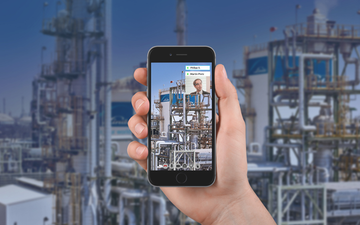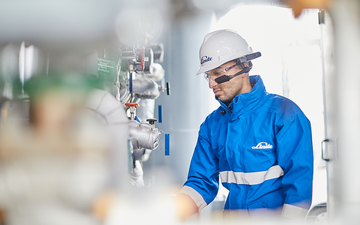Complementing the massive organizational effort involved in preventing the spread of COVID-19, various innovative technologies have also lent a helping hand. Chief among these are
digitalization technologies in general and innovative tools like
LindeGO in particular, which minimizes the need for on-site staff deployments and thus the risk of face-to-face contact. At present, only two LINDE PLANTSERV employees, a site supervisor and a commissioning supervisor, are on permanent duty at the Linz plant complex. Baier explains: “Equipped with the smart glasses, they can go straight to the equipment in question, take photos with the integrated camera, and add notes to these to guide the experts. Based in Pullach, the Linde experts can then view these images in real time and see the condition of the plant components in detail for themselves.” With
LindeGO, remote specialists are virtually propelled into the heart of the complex to support on-site technicians. This allows construction and assembly work to be planned for maximum efficiencies, without the cost and delays involved in on-site personnel deployments.



